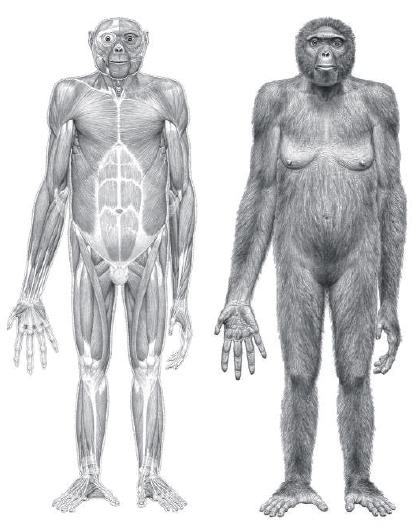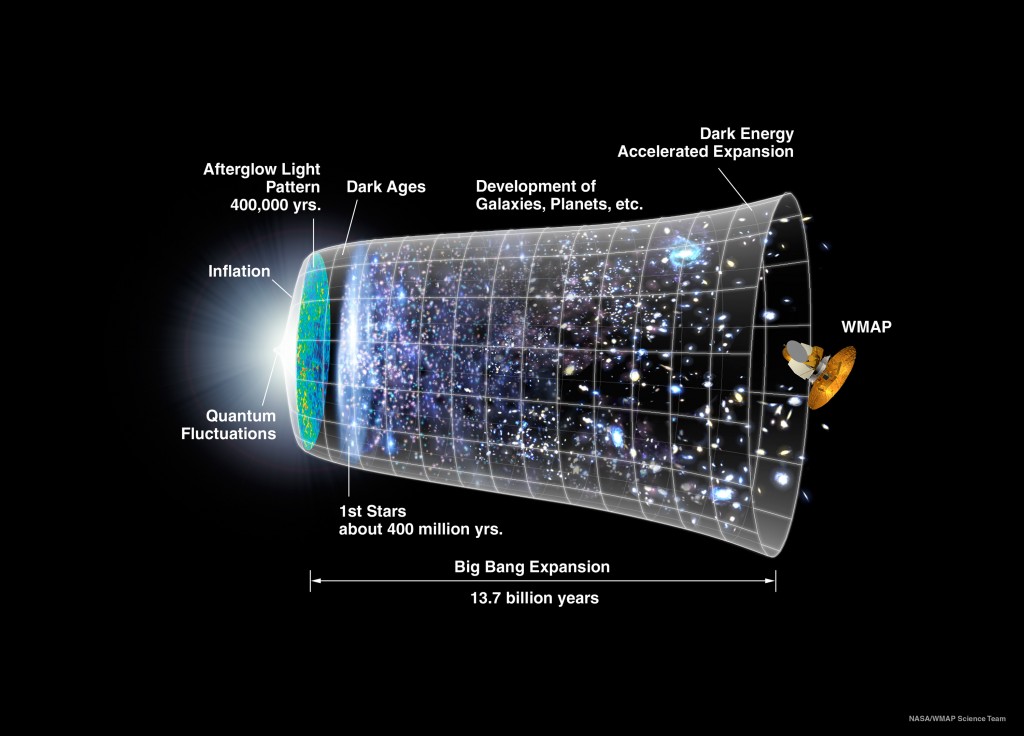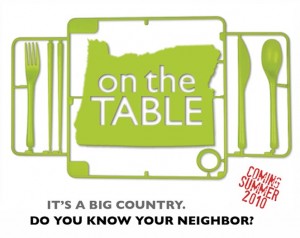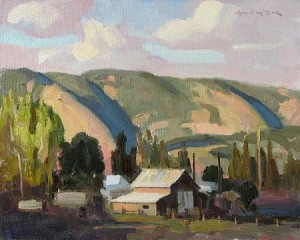
Meet the family: Ardi, or Ardipithecus ramidus, in the flesh. At 4.4 million years old, she’s our REALLY great aunt. Illustration: Jay Matternes, Science magazine
As we all know, modern life seems to be zipping around us at something approaching light speed: Whole trends and movements sometimes flower and die before we’re even aware of them. Whatever happened to the New Kids on the Block?
Thank goodness for science, which tends to take a longer, more measured view of things. It was a pleasure to look at the front pages of my two newspapers this morning and make the acquaintance of Ardi, a distant relative, and welcome her to the sort-of human family.
Ardi — short for Ardipithecus ramidus — is our newest oldest relative. At about 4.4 million years, she’s roughly a million years older than our old friend Lucy, who clocks in at 3.2 million. Ardi and Lucy grew up not too far from each other, about 45 miles distant in what is now Ethiopia. (A couple of even older specimens, Orrorin tugenensis and Saheanthropus tchadensis, might stretch the old family tree back to more than 6 million years, but apparently their fossils are too few for paleontologists to make a definitive case for them.)
Ardi stood about 4 feet tall and weighed a muscle-bound 120 — almost a foot taller and twice the weight of Lucy, according to John Noble Wilford’s typically lively and graceful story in the New York Times. (Brian Switek also has an interesting discussion at scienceblogs.com.) But although Ardi was bigger, Lucy was more advanced in most ways we think of as typically human, including walking. Lucy was much more of a stand-up gal. Despite the drawings, Ardi was likely in climbing mode most of the time: Note the stretched-out arms, huge hands, and relatively short legs.
Ardi’s first bones were discovered in 1992 and scientists have literally been piecing together her story since. At long last she’s having her debutante ball, and — speaking of speed — already she’s a star: Television’s Discovery Channel will air a two-hour special about her, Discovering Ardi, on Oct. 11. She’ll be dressed up in fur for the big event.
This morning, before he left for school, I showed Ardi’s picture to the Smaller Large Smelly Boy.
“She lived 4.4 million years ago,” I said. “That’s pretty old.”
“Yeah, but not as old as you,” he replied. “What was it you were doing on the day of the Big Bang?”
For the record, I was trying to take a nap.

Time Line of the Universe, with Big Bang. NASA/WMAP Science Team; Wikimedia Commons
 Here’s the thing. Arts people have been around a very long time, and no matter how hard you kick ’em around, they keep popping back up.
Here’s the thing. Arts people have been around a very long time, and no matter how hard you kick ’em around, they keep popping back up. Sojourn is a Portland-based company that tours the country, developing and performing community-based plays that usually coalesce around specific themes. For the last year, among a myriad of other activities, it’s been working on a new piece called On the Table that looks at food, and how it’s grown and distributed, and the choices we make about it, and the impact it has on various communities. A lot of field reporting (in this case, literally) goes into a typical Sojourn show, and that takes time and resources. Company director Michael Rohd figures the project has another year to go: “The show will happen Summer 2010 simultaneously in PDX and a small town 50 miles from PDX, and explores the urban/rural conversation in Oregon, culminating with a bus trip for both audiences and a final act at an in-between site,” he says.
Sojourn is a Portland-based company that tours the country, developing and performing community-based plays that usually coalesce around specific themes. For the last year, among a myriad of other activities, it’s been working on a new piece called On the Table that looks at food, and how it’s grown and distributed, and the choices we make about it, and the impact it has on various communities. A lot of field reporting (in this case, literally) goes into a typical Sojourn show, and that takes time and resources. Company director Michael Rohd figures the project has another year to go: “The show will happen Summer 2010 simultaneously in PDX and a small town 50 miles from PDX, and explores the urban/rural conversation in Oregon, culminating with a bus trip for both audiences and a final act at an in-between site,” he says.